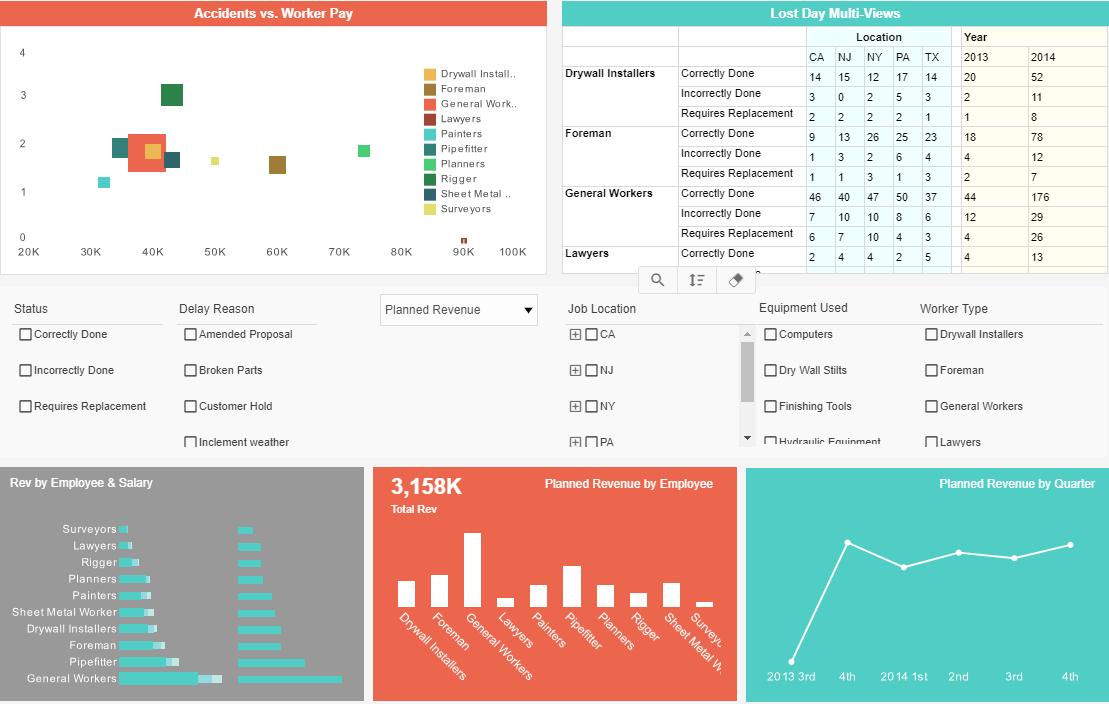InetSoft Webinar: Learning to Collaborate on Performance Improvement
This is the continuation of the transcript of a Webinar entitled, "Infrastructure Optimization Scorecards” hosted by InetSoft. The speaker is Jessica Little, Marketing Manager at InetSoft.
This brings me to my next point: how to collaborate on performance improvement with other business units in an organization. I personally would like to see more credit go to the things that are more on time and respectable than the negative aspects that get recognized. Part of that requires a governing body that’s out to change the environment. We’ve heard a number of thought leaders say why the environment needs to change and how it can’t be a serial process. You have to set it up and make it easy enough so there’s a parallel path for change. Each business area has to have their own piece of change, but in the end, they all have to fit together.
So basically, you have to have a little bit of value and commonality for each of the business areas. So for a large organization, each business area has to be aligned with each other and produce their own results at the same time. This is pretty self explanatory, and then the repository can really link these pieces together. I would really like to create this. I still haven’t actually figured out how to design this so that there is a cluster of improved service capabilities for each area.
How Do You Share Work With Another Business Unit?
Using Joe as an example, who’s in one business unit, has completed his task. How do you share his work with another business unit? How do you make that happen in a real life project and make it successful? How do you get that?
Now using Sam as the example, he’s struggling with the same problems and capabilities, like having a way to search through the repository for information and connecting people’s work together. People have to learn to collaborate and coexist with each other and this must be easily adaptable some way. If that’s possible, we can know beforehand what we’re doing and have a plan laid out. This is what happened to Medicaid and some states.
10 states got together and saw a problem with eligibility issues and fraud so they started sharing information. The environmental area has done the same thing as well. The federal government didn’t have enough money to share environmental data with every state so the states got together to build a community across the government.
So the idea of working more as a community is very appealing. One of the benefits of coming here is I know how far I am to getting my thoughts and how to improve it. The problem is, I’m a dashboard designer, an integrator of things, and I see that these ideas of scorecard design rules use capabilities, maturity models, and scorecards can fit together but people first have to be engaged.
Not only do a small handful of people at the top of the organization need to be engaged, but also the entire organization as a whole. With web-based reporting technology, at least with web repositories, people can at least say you can go to that repository and look at it. That’s how they can contribute without giving any excuses.
How a Coffin Manufacturer Uses StyleBI for Collaboration
EternaCo, a manufacturer specializing in affordable modular coffins, implemented the open source StyleBI platform to enhance collaboration across its production, design, and sales teams. Previously, communication between departments relied on emails and separate spreadsheets, which often led to delays and inconsistencies in production planning and inventory management. With StyleBI, all teams could access a unified analytics platform, creating a single source of truth for operational metrics, sales forecasts, and supply chain status.
The interactive dashboards allowed teams to visualize production workflows and track the status of orders in real time. Designers could upload new coffin designs and see how material costs, production time, and resource allocation would be affected, while production managers adjusted schedules to optimize efficiency. The collaborative features of StyleBI, including shared dashboards and comment threads, ensured that all stakeholders could provide feedback and make data-driven decisions quickly without waiting for IT to generate reports.
Sales and customer service teams also benefited from the shared analytics environment. By accessing the same dashboards as production, they could provide clients with accurate delivery estimates, monitor inventory availability, and adjust pricing strategies based on real-time demand trends. The alignment between front-office and back-office teams reduced errors, improved customer satisfaction, and increased responsiveness to market fluctuations.
Overall, using StyleBI transformed how EternaCo collaborated across its organization. Teams could make coordinated decisions, reduce miscommunication, and quickly respond to operational challenges. The platform’s self-service analytics capabilities empowered staff to explore data independently, while governance and role-based access ensured data security and compliance. By integrating collaborative BI into daily workflows, EternaCo improved efficiency, strengthened internal communication, and enhanced its ability to meet customer expectations in a sensitive and highly specialized market.


